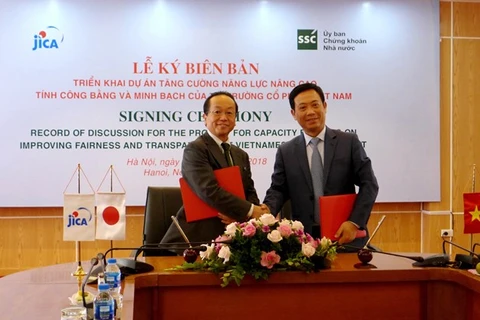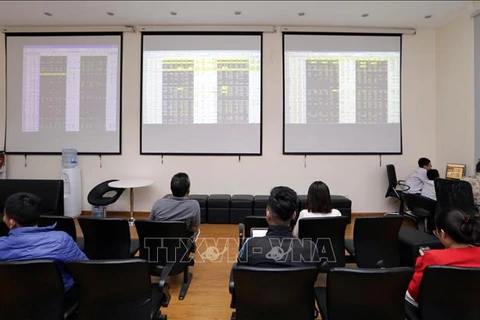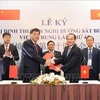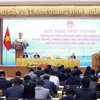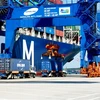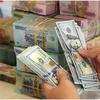Hanoi (VNS/VNA) - Bond issuance is becoming a popular channel for firms to raise capital for its efficiency and convenience.
In the first six months of 2019, listed companies on the Ho Chi Minh Stock Exchange (HOSE) raised more than 19 trillion VND (812 million USD) via share issuance, up 17.2 percent compared to 2018.
But this only met part of the capital demand as both listed and unlisted firms had to mobilise a total of 90 trillion VND through bond issuance in the first six months, up 34 percent compared to the same period last year.
Most of enterprises approved to list on the stock market wish to raise capital from share issuance to reduce the dependence on bank loans, but in fact they seem to still find it hard to mobilise long-term capital.
An Phat Securities Joint Stock Company (APG) in 2019 plans to increase its chartered capital from more than 340 billion VND to 1 trillion VND. Under the initial plan, the company will issue shares to pay 2018 dividends and issue shares to the public to raise capital.
However, prior to the general shareholders' meeting in 2019, the board of directors added a plan to issue 100 billion VND of bonds in case the share issuance plan fails.
Statistics from the HOSE show that the amount of capital businesses listed on the bourse mobilised via share issuance in the first six months of 2019 recorded strong growth but still quite low in absolute value.
In 2017, listed companies on HOSE raised more than 28 trillion VND through issuing shares. This figure plummeted to 16.5 trillion VND in 2018 and rose to 19.3 trillion VND in the first half of 2019.
In 2018, the capital enterprises raise from issuing both shares and bonds increased by 35.4 percent compared to 2017, reaching 64.9 trillion VND. However, this figure is small compared to the credit/GDP ratio of 2018 of 134 percent.
The proportion of capital supply from the capital market to the economy this year increased significantly compared to 2017, but stood at only 14 percent, which means that businesses still rely heavily on bank loans.
Notably, banks seem to prefer to purchase corporate bond for its flexible investment opportunities.
According to a deputy general director of a listed bank, commercial banks were key investors in the corporate bond market. Banks prefer to invest in corporate bonds because they can earn good profit with bond interest rate of 12-13 percent per year.
This trend is expected to continue in the future as businesses will switch to the bond channel to call for capital from banks.
Businesses selling bonds to banks are similar to borrowing money from them, he said.
But compared to borrowing from banks, raising capital through bonds has some advantages such as no collateral is needed and firms can use the money without bank supervision.
“The majority of bond issuances are mostly private placement, with easier conditions and more simple documents compared to issuing shares, make it more convenient for businesses to quickly have capital,” he said.
Bond interest rate now stands at 13-14 percent per year, therefore strongly attracts individual investors.
But according to the deputy general director, the enterprises will spend the mobilised money on their own wishes while sometimes not following the guidelines adopted by the general meeting of shareholders.
The process of using capital is less transparent, affecting the confidence of investors, he said.-VNS/VNA
VNA


